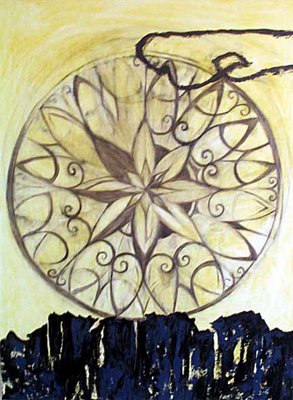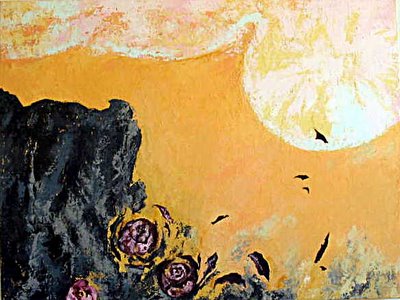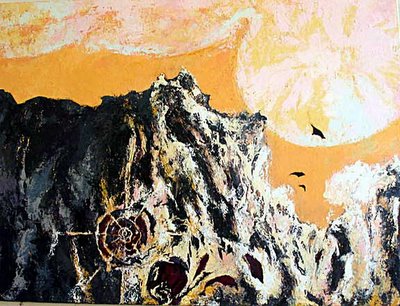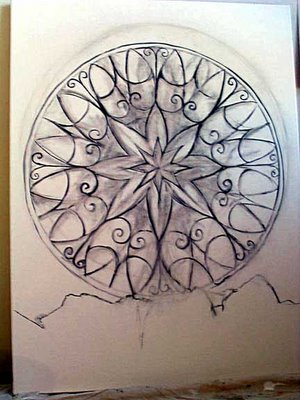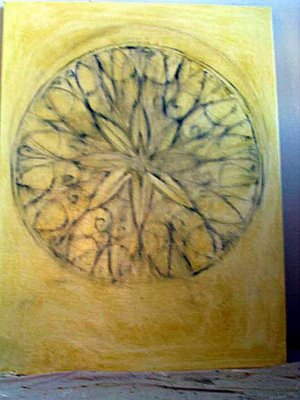Lately I have been lurking on that most wondrous of blogs,
Miss Snark, the Literary Agent. It makes for lively reading, even for those of us who are NOT currently seeking publication for our first novel--thank goodness for small mercies. For the last few years I have been trying to get my work shown, funded, and represented in New York City, and that is grounds for one suicide attempt already, should I choose to accept it.
However, artists and writers share one thing in common;
The Rejection Letter. After reading the examples of writerly rejections on this site, I was shocked at both the variety and the relative kindness of the letters received by writers, from agents, magazines and publishers. Many of them were creative; many offered sincere compliments, good advice, or pertinent information. I considered the vast avalanche of fury and frustration by the writers in response to be misplaced, if understandable.
Art rejection letters come in one standard, nearly universal format. They tell you that a staggeringly huge number of artists applied for a staggeringly small number of grants, residencies, or places in the exhibition, and provide the specific statistics. Sometimes they wish you good luck. That's it.
Then, of course, they put you on the mailing list for all the exhibitions you aren't included in, and send semi-annual fundraising letters asking you for money. Never mind that the reason you applied in the first place was that you have neither a trust fund nor a lucrative day job. Largely, I think, our society has trouble believing that there really are such things as full-time artists; they think we must be pretending. If they think about it at all.
For years, I took these rejection letters as simply part of the job. I thought, "must keep a stiff upper lip, show professionalism, go to the show anyway and smile, etc." Then I noticed that after receiving a batch of them, I would 1) stop applying for things for a year or three and 2) throw whole portfolios of decent work in the garbage. I wasn't being 'professional' at all, I was being 'repressed.'
Then I hit on the notion of throwing small, private tantrums in the safety of my own home. This worked excellently well; punching pillows, kicking walls, screaming irrational obscenities at the cat. I was careful to do all of this when there was no other human within shouting distance, and never, never, never to send an email or make a phone call until I was done. I still recommend this technique to all and sundry. After years of this I've gotten my tantrum-time down to under a minute; I crumple up the letter, stomp on it a few times, throw it in the trash and start making dinner. Saving rejection letters is masochistic and pointless, even to a former librarian.
Lately, though, I've been wondering something even more subversive--namely, should I keep applying for this stuff at all? It's like perpetually being an extra in a Hollywood cattle call. You spend an enormous amount of money on slides, prints, postage and paper; it's a part-time job to research the opportunities, write statements and print slide labels. Then you wait for six months and get another stack of letters.
Moreover, all this work you're doing, writing statements and making slides, is going through the filter of a set of people who have their own personal artistic agendas. Unlike in the publishing industry, there's no standard of agreement in the 'art world' about what constitutes a good painting. (Yes, I know, you writers, don't get started. I'm generalizing.) Most of the jurors on any given panel know very little about painting, and are looking for something
arcane and strange to champion, in order to stake out their personal conceptual/aesthetic territory. Moreover, it's very difficult to get more than a general idea of the most superficial aspects of a good painting, through a slide or a JPEG. One recent competition I entered was decided on the basis of three-inch, 72 dpi email attachments. For an artist who is concerned primarily with the kinesthetic impact of a piece when it's in the room, how is this doing any good?
I know that this sounds like sour grapes. Hold on a minute.
When looking at a piece of art,
context plays an enormous role. Many artists don't understand this at all; they subscribe to a sort of tunnel vision that takes in only their own intention. I discovered this when I was running my gallery. Most of the artists had no clue as to how to hang their own work; they could not see that the relationships between the work, the space, the light, and the other work in the gallery played an enormous role in how their piece would be perceived.
And this was in a
gallery setting; it gets a thousand times worse when the work is hung in a restaurant, say, or a bar. You could put a Vermeer in an Internet café, and four thousand cultured New York City art fans would look right past it. On the other hand, you could put a drawing by a retarded three-year-old in a Chelsea gallery, and some yahoo would be sure to get wildly excited about it.
This is not to say that art is always an entirely subjective experience. It takes time, sometimes generations, for the gold to settle out from the hype. I am willing to bet that by the year 3000, Picasso will be regarded as a pretentious twit, if he is regarded at all; and that the late works of Isamu Noguchi will be hailed as timeless masterpieces. If there is such a thing as civilization by then.
In any case, whether or not to keep applying to the cattle calls is not the important question. The truth is that I
know I'm a damn fine artist. I've been on countless trips to the major museums of the world, and soaked it all in--the Tate, the Met, the Louvre, the Kimbell, the MoMA, the Whitney, the San Francisco MoMA, the Art Institute of Chicago, the Rufino Tamayo Museum. I've got a library full of reference books which I have pored over and analyzed, in humility and awe. More than that, I have studied my craft, and I have Lived. I have something important to say and the tools to say it with. Yes, I'm young, I'm cocky, I get lazy and hopeless and despairing at times. There are artists alive today who blow me out of the water. But I know, deep down, that I am in the running. If I didn't know this I would have given up a long, long time ago.
All this to say--that the external stuff, the grants and the residencies and the juryings--this is not a career. My career as an artist is something within me. It's in all of us. Most of the journey is in coming to understand this, and passing it on.
